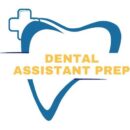The DANB RHS Exam consists of 75 multiple-choice questions, intended to evaluate candidates’ knowledge in radiation health and safety. It’s a crucial step for dental assistants aiming for certification and professional growth.
While the exam itself takes 60 minutes to complete, it’s packed with questions designed to test key competencies in dental radiography and safety procedures. If you’re preparing to take the DANB RHS Exam and are looking for the essentials to guide your study, keep reading for insights on topics covered, scoring, and valuable tips for success.
What is the DANB RHS Exam?
If you’re here, chances are you’re considering a career in dental assisting, or perhaps you’re on the cusp of furthering your credentials in this field. Either way, understanding the role of the Dental Assisting National Board and the Radiation Health and Safety (RHS) exam is crucial.
The DANB is the definitive certifying body for dental assistants across the United States. Gaining certification through the DANB signifies a remarkable level of expertise and commitment to your career. One of the fundamental certifications the DANB offers is the RHS—a testament to your knowledge in radiographic procedures and safety.
Importance for Dental Professionals
Why take the DANB RHS exam?
For starters, it’s a hallmark of professional development and is often required or recognized by state dental boards. Successfully passing the RHS exam can boost your resume, potentially increase your earning power, and, more importantly, ensure the safety and well-being of the patients under your care.
Gaining this certification doesn’t just mean you’ve memorized a bunch of textbook information; it means you’re equipped to handle real-world situations involving x-rays in the dental office. You’ll be the go-to person for radiographic imaging, understanding not only how to capture the best images but also how to do so safely, minimizing radiation exposure risks to patients and staff.
The Structure of the DANB RHS Exam
The DANB RHS exam is meticulously designed to assess your knowledge across several key areas related to dental radiography. The structure of the exam is straightforward, yet comprehensive, ensuring that all certified individuals meet the high standards expected in dental health care.
Exam Format and Content
The exam is computer-based, utilizing a multiple-choice format that tests your practical understanding and ability to apply concepts in real-world scenarios. The questions are divided into content areas that cover the breadth of knowledge needed to excel in radiographic health and safety.
Among these topics, you will find questions relating to:
- Radiation basics, from physics to biology
- Radiographic equipment and their use
- Techniques for ensuring quality in dental imaging
- Safety procedures and regulations
Familiarity with Exam Format
Before embarking on your exam journey, it’s advantageous to get a feel for the computer-based test environment. By understanding how to navigate the questions and use the time provided effectively, you’ll position yourself for a smoother exam experience.
Number of Questions on the DANB RHS Exam
The pressing question on your mind might be, “How many questions are on the DANB RHS exam?” The answer is concise—there are 75 multiple-choice questions on the exam. Each question is designed to probe your knowledge and comprehension of critical radiographic safety protocols and procedures.
Remember, while it might seem like a race against the clock to tackle all 75 questions, your focus should be on accuracy and applying your knowledge pragmatically to each question.
Key Topics Covered in the RHS Exam
Delving into the key topics covered by the RHS exam will help you identify areas where you may need to focus your studying efforts. The breadth of the exam encompasses a variety of subjects, all integral to the safe practice of dental radiography.
Here’s a snapshot of the central themes you’ll encounter:
- Radiation Protection: Ensuring the safety of patients and staff, understanding dosage limits, and following ALARA (As Low As Reasonably Achievable) principles.
- Image Capture and Processing: Mastery of techniques for obtaining clear images and familiarity with both digital and film processing.
- Infection Control: Implementing proper sterilization practices and barrier techniques to prevent cross-contamination.
- Radiographic Anatomy: Recognizing normal and abnormal findings in dental radiographs.
- Quality Assurance: Regularly assessing equipment and procedures to maintain the highest quality standards.
As you can see, the RHS exam is designed to challenge your comprehensive understanding of all facets of dental radiography. This ensures that certified professionals can confidently uphold and advocate for the highest safety standards within their practice.
Moreover, for a detailed examination of the topics, you may find the RHS Exam Outline offered by DANB to be an invaluable resource.
Duration and Timing of the Exam
When you sit for the RHS exam, it’s not just your knowledge that will be tested but also your time management skills. You will have 60 minutes to answer all 75 questions, which translates to less than a minute per question.
Given the tight timeframe, you’ll need a strategy to navigate through the questions efficiently. This means you can’t afford to get bogged down by any one question. It’s important to move through questions at a steady pace and to make educated guesses when necessary, flagging questions for review if time permits.
Considering the time-sensitive nature of the exam, practicing with timed quizzes can be a beneficial part of your preparation. This can help you gauge how quickly you can move through questions while still maintaining accuracy.
While 60 minutes might initially seem daunting, with thoughtful preparation and a calm, focused approach on exam day, you’ll position yourself well to conquer the exam within the allotted time.
Scoring Mechanism for the DANB RHS Exam
The moment you complete the last of the 75 multiple-choice questions, you’re likely to wonder how your answers will be translated into a score. The DANB utilizes a pass/fail system based on a scaled scoring method. This means your raw score – the number of questions you answered correctly – is converted into a scaled score that ranges from 100 to 900. To pass the RHS exam, you must achieve a minimum scaled score of 400.
Understanding the scoring methodology is important, as it assures fairness and consistency across all exams, which may vary slightly in difficulty. The DANB applies a modified Angoff standard setting method to ensure that the passing score reflects a consistent level of knowledge and competency, regardless of which version of the exam you take.
The RHS exam is criterion-referenced, meaning your score is not compared to those of other test-takers. It’s about meeting the set standard, not beating the curve. So, while you might be curious about how many questions are on the DANB RHS exam and how they’re scored, rest assured that each one you answer correctly gets you closer to that pass mark.
Preparing for the RHS Examination
Your success on the RHS exam hinges on not just knowing the material but also being able to apply it. Start by reviewing the RHS Exam Outline provided by DANB to get an overview of all the topics covered. Then, delve into study materials that can bolster your knowledge base. The DALE Foundation’s RHS Exam Prep Bundle and Practice Test are excellent resources.
Remember, quality trumps quantity when it comes to studying. Instead of trying to cram as much information as possible into your brain, focus on understanding concepts deeply and practicing application through sample questions or simulations. Active learning techniques, like teaching back material to a study partner, can significantly enhance retention.
Another aspect of preparation is the practical experience. Ensure that you have sufficient hands-on experience with dental radiography, as this real-world application can provide context to the theoretical knowledge, making it easier to recall and apply during the exam. If there are areas where your experience is lacking, seek out additional opportunities to broaden your skills.
Retaking the Exam: What You Need to Know
Even with thorough preparation, there’s a possibility that you might not pass the RHS exam on your first attempt. This is not the end of your journey! You can resit the examination, though it’s essential to be aware of the policies regarding retakes.
There are limits on the number of times you can retake the exam, as well as mandatory waiting periods between attempts. This is to ensure that you have adequate time to prepare and address any areas of weakness. As the specifics of these policies may change, always consult the latest information from the DANB website to plan your retake strategy effectively.
Exam Day Tips and Best Practices
The day has arrived. You’ve studied hard, practiced, and now, it’s showtime. First and foremost, ensure you’ve got the basics covered: bring appropriate identification and arrive on time at your designated testing center. Review the list of what to bring and what to expect on the RHS Exam page.
Once you’re settled in for the exam, use a calm and systematic approach. Skip questions that seem too challenging at first glance and return to them after you’ve gone through the entire question set. This helps with time management and can also build confidence as you answer easier questions.
Beyond the Exam: The Next Steps in Certification
Passing the RHS exam is a commendable achievement and a stepping stone towards further certification. You might consider advancing your career with certifications such as Certified Dental Assistant (CDA), Certified Orthodontic Assistant (COA), or Certified Preventive Functions Dental Assistant (CPFDA), all of which include the rhs exam as a component.
Your learning and development as a dental assistant don’t stop at passing an exam. Stay abreast of industry changes, and seek continual education to ensure that your skills and knowledge remain sharp. Remember that recertification is a periodic requirement to maintain your credentials, which often involves ongoing education credits.
Conclusion: Your Path to DANB Certification
Tackling how many questions are on the DANB RHS exam and ensuring you are fully prepared for it demands dedication. This article aimed to demystify the examination process, highlighting the structure, scoring, preparation strategy, retake policies, and day-of best practices.
Your pathway to DANB certification is paved with hard work, study, and hands-on experience. Passing the RHS exam is a testament to your knowledge and commitment to the field of dental health safety. Use this guide as your reference, trust in your preparation, and step into that exam room with the confidence that comes from knowing you’re ready.
When you earn that passing score, you’ll join the ranks of certified dental assistants who play a pivotal role in delivering safe, high-quality dental care. Your certification is not just a piece of paper; it’s a reflection of your expertise and a passport to a fulfilling career in dental assisting. Go forward and excel!

